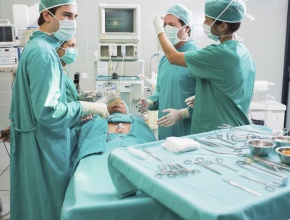Please be advised that until the end of August Publications of the Week will be temporarily published in a less frequent, biweekly cycle.
Timing of RRT in ICU patients
Mehta RL. Renal-Replacement Therapy in the Critically Ill - Does Timing Matter? N Engl J Med. 2016 May 15. [Epub ahead of print] PubMed PMID: 27181293.
This study investigated the potential effects of an early start of dialysis therapy in critically ill patients with new onset of acute renal failure. The authors found no significant advantages of starting dialysis early versus dialyzing only once a definitive indication for dialysis occurred. Such criteria included a blood urea nitrogen (BUN) level over 40 mmol/L, acidosis (pH <7.15), a potassium level over 6 mmol/L, oliguria or anuria for more than 72 hours, acidosis, and acute pulmonary edema. While there was no difference in mortality, 50% of patients in the delayed-dialysis group avoided dialysis.
These results will likely help in situations of management uncertainty and apply to many intensive care unit patients who have acute kidney injury yet still do not require immediate dialysis.
LAMA vs ICS in patients with COPD
Among patients at high risk of chronic obstructive pulmonary disease (COPD) exacerbations, a combination of a long-acting ß2-agonists (LABA) and a long-acting muscarinic antagonist (LAMA) was associated with less frequent exacerbations than the often recommended combination of a LABA and an inhaled corticosteroid (ICS) (3.59 vs 4.03 exacerbations per year). Patients included in this study had COPD of at least moderate severity (grade 2 or higher on the 4-point modified Medical Research Council scale), FEV1 from 25% to 60% less than predicted, FEV1/FVC less than 70%, and at least 1 COPD exacerbation treated with antibiotics, steroids, or both within the previous year.
Bariatric surgery in adolescents
Bariatric surgery performed on over 200 adolescents aged 13 to 19 years was associated with a major weight loss (from a body mass index of 53 to 38; percentage change: 28% for gastric bypass and 26% for sleeve gastrectomy). Among patients who had such conditions at baseline, resolution of diabetes mellitus (13%) and prediabetes (10%) occurred at 3 years in over 90% and 75% of patients, respectively; resolution of hypertension (prevalence, 43%) in over 75% of patients; and resolution of hyperlipidemia (prevalence, 76%) in over two-thirds of all patients. About 13% of patients required another surgery within the next 3 years (majority cholecystectomy) and 5% required endoscopic stricture dilation.
These results may help people considering such surgery in young patients.
 English
English
 Español
Español
 українська
українська





